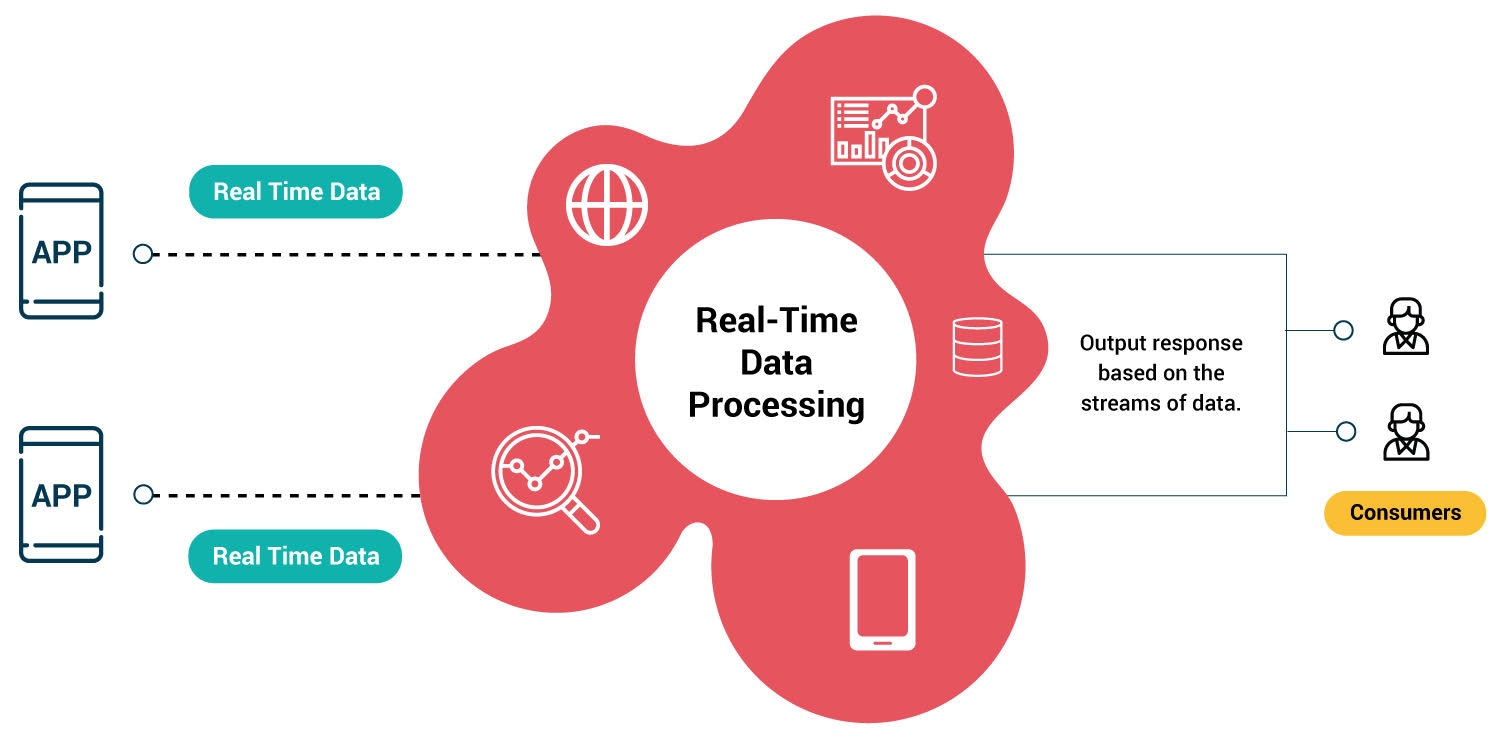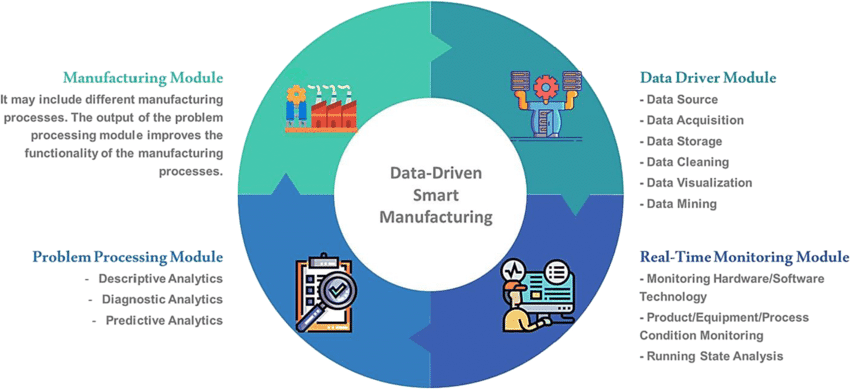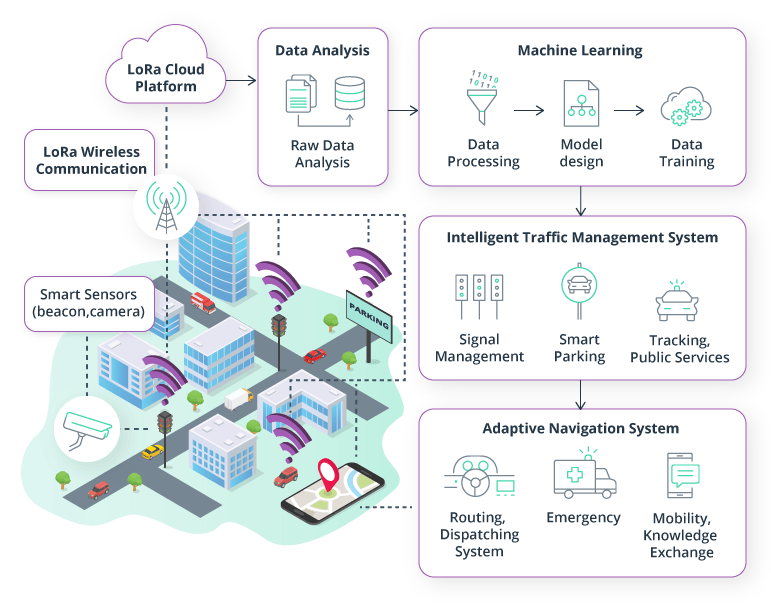
The enormity of data created is overwhelming, with an estimated 1.145 trillion megabytes of data being generated daily. As the floodgates of data continue to open wider, the focus of businesses has shifted from merely collecting data to deriving immediate value from it. This shift has changed real-time data processing from a novelty to a business necessity.
Real-time data processing became a prominent technique in modern data management that focuses on instantly processing information. This technology guarantees rapid delivery of valuable insights to empower you to quickly adapt and respond to changing circumstances.
However, like all technologies, real-time data processing is not without its drawbacks. While it promises speed and immediacy, there are challenges that organizations must navigate to unlock their true potential.
In this 9-minute guide, we’ll break the concept of real-time data processing down and look at its pros and cons. We’ll also discuss compelling use cases to provide a comprehensive understanding of this concept. So, let’s jump right in.
What Is Real-Time Data Processing?
Real-time data processing is an efficient method of data analysis where the data is processed almost instantaneously upon input. It is a continuous operation requiring a constant flow of incoming data to generate a steady output. It acts as an analytical data store, constantly analyzing data to produce timely insights.
Examples of real-time data processing systems can be seen in everyday technology like bank ATMs, traffic control systems, personal computers, and mobile devices. All these applications are powered by a real-time processing architecture which forms the backbone of their operation.
Real-time processing is different from its counterpart, batch processing, where data is collected over a period of time and processed all at once at a later stage. While batch processing delays the output, real-time processing guarantees prompt results.
Even though the term 'real-time' suggests instant processing, understand that there is always a minuscule delay, typically measurable in milliseconds. ‘Real time’ therefore refers to a processing speed that falls within a system-specific benchmark. For instance, a bank ATM could be classified as real-time if it responds within a tenth of a second, a time frame that may be insufficiently quick for a supercomputer.
Pros Of Real-Time Data Processing: Understanding The Potential
Grasping the ins and outs of real-time data processing can unlock a world of opportunities for businesses. It is a preferred choice over batch data processing when the processing speed is crucial for business operations as it reduces the risk of outdated information and makes the most of time-sensitive data.
Real-time systems have made a huge difference in how businesses run these days. They have completely transformed operational efficiency and given companies a major competitive edge. Let us look into some of these remarkable advantages.
Swift Decision-Making & Responsive Actions
The major advantage of real-time data processing is its ability to facilitate fast decision-making. As data enters the system, it is processed immediately and provides on-the-spot insights. This capacity to analyze data on the fly allows you to act and respond to situations as they unfold.
It also lets you handle customer queries or solve issues as they arise. This rapid response mechanism, facilitated by real-time data processing, significantly enhances customer service quality.
Reduction In Data Loss & Facilitated Data Recovery
Real-time data processing minimizes the risk of data loss as data is instantly saved upon entry into the system. In the event of a system failure, real-time data processing allows for immediate recovery of data because of its backup mechanism.
Rapid Processing Of Large Volumes Of Data
Real-time data processing supports scale-out processing, which ensures that it can reliably handle large volumes of data. This becomes crucial in situations that require the analysis or modification of large data sets within a tight timeframe.
Improved Customer Service & Trust Building
Real-time data processing helps you maintain updated user data and respond to issues in real time which can dramatically enhance customer support. This way, you can instantly provide customers with all the necessary data they need. It not only builds trust but also takes customer service to a whole new level and you can forge strong and meaningful relationships with your customers.
Swift Error Detection
When you use real-time data processing, you can detect errors and fix them quickly. This not only helps prevent big or disastrous failures but also builds up the company's reputation in the long run.
Cons Of Real-Time Data Processing: Navigating The Challenges
Entering the world of real-time data processing requires a balanced understanding of its capabilities. Sure, the idea of getting instant insights sounds amazing, but it's equally important to be aware of the challenges that come with it when choosing this method for processing data. Let’s take a look at some of these downsides of real-time data processing.
Financial Implications & Technical Demands
Real-time data processing requires specialized hardware and software which significantly ramps up the overall complexity and cost. These systems are continually operational and need regular investment and maintenance. This poses a financial strain, especially for smaller organizations that can't afford the high cost of acquisition and ongoing expenses.
Performance Limitations & Task Management
As data arrives in real-time, effective task prioritization becomes crucial to ensure timely processing and avoid bottlenecks. One of the biggest challenges lies in efficiently managing resources and allocating processing power to critical tasks, particularly when multiple tasks compete for resources. As such, these systems are less adaptable to task-switching, which makes it a challenge to manage and complete tasks based on priority.
Security Risks & Accuracy Challenges
Real-time systems can pose security and privacy risks, especially when they are handling sensitive or personal information. If not designed and implemented with proper safeguards, there’s a risk of unauthorized access or data breaches.
When it comes to real-time processing, the need for speed and efficiency is a top priority. However, there's a catch: the more we prioritize speed, the higher the risk of errors. Even a small inaccuracy can have far-reaching consequences, especially in critical sectors like financial trading or healthcare.
Limitations In Data Analysis
Real-time processing focuses primarily on handling current data which can limit its ability to conduct historical analysis. The system may fail to identify long-term trends and patterns that make it less ideal for strategic decision-making based on historical data.
Additionally, it struggles with complex calculations, especially those involving data averaging relative to other transactions. This lack of computational flexibility can be a barrier in more complex data evaluation scenarios.
After weighing the pros and cons of real-time data processing, it's time to explore the practical side of these theories and see how businesses are successfully using this technology to optimize their operations and achieve extraordinary results.
7 Examples Of Real-Time Data Processing To Optimize Business Operations
The evolution of technology created a demand for instantaneous data processing across various industries. Real-time data processing helps organizations navigate this increasingly dynamic environment and lets them make timely and informed decisions.
Here are some sectors that are benefiting the most from real-time data processing.
Manufacturing
Manufacturers increasingly rely on real-time data processing for predictive maintenance. With it, they can process data to continuously analyze equipment performance and detect potential faults before they result in system breakdowns. This drastically reduces downtime and unplanned repair costs.
It also helps optimize production processes. You can identify bottlenecks and streamline workflow and staffing. In effect, manufacturers can promptly enhance quality control and prepare for total quality management audits.
Retail
With real-time data processing, retailers can track inventory levels and sales data across various stores or product categories instantly. This allows them to quickly respond to changes in demand and adjust their stock orders accordingly.
It also helps optimize pricing and promotional strategies and compare their performance against competitors. Real-time data analysis tools gather insights from customer reviews and feedback on social media platforms to help understand market preferences and tailor marketing campaigns.
Finance
Financial institutions are using real-time insights to make swift strategic adjustments in response to live customer behavior and market shifts. This mitigates default risks and allows for dynamic resource allocation, more balanced portfolios, and precise credit risk assessments.
Also, real-time data analysis can quickly detect suspicious activities like money laundering. This proactive approach to monitoring transactions and customer behavior not only mitigates financial risks but also strengthens the institution's overall security framework.
Healthcare
Real-time data analytics in healthcare extends beyond the conventional heart monitor beeping in a hospital room. It allows hospitals to predict potential health issues before they occur, helping in early diagnosis and proactive care. In addition to diagnostics, real-time data processing can optimize operational processes like tracking inventory levels of drugs and supplies, thereby reducing operational costs.
Energy
Real-time analytics play a significant role in monitoring renewable energy sources like solar or wind power. With real-time stream processing, operators can track and analyze weather conditions affecting production to accurately predict electricity generation at any given moment. Additionally, real-time analysis of electrical grid operations helps identify faults quickly which improves the safety and reliability of the networks.
Transportation
Real-time data enhances the safety and efficiency of transportation systems. Automated sensors embedded in vehicles and shipping containers provide real-time information about traffic, weather, road conditions, and vehicle performance. This input data helps transportation companies allocate resources effectively during peak demand times and improve route efficiency.
Telecommunications
Telecommunication companies use real-time data to get an accurate understanding of customer usage and behavior. This not only helps optimize their network and plan for future changes or upgrades but also aids in fraud detection and signal quality optimization. These companies can also tailor their offers based on consumer purchase patterns and improve the efficiency of marketing campaigns.
2 Case Studies To Understand The Potential & Versatility Of Real-Time Data Processing
Case studies provide a practical lens to understand real-world applications of theoretical concepts. Let’s take a look at 2 case studies to help us learn from the successes and challenges others faced, and apply these lessons to our unique circumstances.
Case Study 1: Real-Time Customer Interaction In The Banking Industry
Banks are continuously looking for ways to improve their marketing strategies to capture more clients and generate additional revenue. One of the leading banks, BNP Paribas Bank Polska, recognized a need to make its offer promotions more personalized and enhance its customer experience and marketing effectiveness. The problems they faced were:
- The inability to process and respond to data in real time posed a challenge to the bank's marketing ambitions.
- The existing IT system was not equipped to support this personalization because of its limitations in real-time data processing.
Solution
Determined to overcome these challenges, BNP Paribas Bank Polska used the power of real-time data processing:
- The bank adopted an event-driven architecture that enabled the system to respond to live events for more responsive and adaptive marketing campaigns.
- This real-time data processing capability was integrated with their existing IT system.
- The newly enhanced IT system was now capable of processing large volumes of data and supporting various types of business logic.
Results
Implementing real-time data processing led to substantial improvements in BNP Paribas Bank Polska’s marketing strategy:
- The new approach increased revenue opportunities and set a new standard for marketing strategies in the banking industry.
- The bank reported a 4x increase in conversions, directly attributing this success to their new personalized marketing campaigns.
- The real-time data processing solution provided a more streamlined promotion system and enhanced customer engagement.
Case Study 2: Real-Time Data Processing In Telecommunications Industry
A renowned telecommunication company, using an off-the-shelf batch marketing platform, was faced with a challenge when the real-time extension of the platform underperformed significantly. The company needed a solution that could handle high throughput and analyze events in specific time windows. Several concerns hindered the implementation of a satisfactory solution:
- The company required fast development cycles to respond swiftly to market changes.
- Managing high-volume events the telecom systems produced required complex IT tools.
- Off-the-shelf marketing platforms were expensive to customize with long delivery cycles.
- They sought a holistic solution across channels instead of separate solutions for batch and real-time processes.
- The decision algorithms needed to be accessible to non-programmers with domain-specific knowledge.
Solution
To meet these challenges, the client implemented a low-code visual tool, resulting in:
- Initiation of 100 active streaming and 95 batch marketing campaigns.
- A custom-built subsystem was developed for campaign technical monitoring and effectiveness measurement.
- A variety of marketing channels were managed simultaneously: SMS, MMS, RCS, email, mobile devices push & pull, IVR, and telesales.
Results
The solution offered several beneficial features that addressed the client's needs:
- It abstracted out complex technicalities, turning decision algorithms into easily modifiable decision tables.
- A single solution for all engines ensured seamless marketing communication and reduced redundancy with a unified technology stack.
- The chosen platform offered flexibility in building complex decision algorithms. It added extra components and menus to the interface used across all business domains which demonstrated its easy extendability.
Why Estuary Is The Best Tool To Utilize Real-Time Data Processing
Estuary Flow is our real-time, fully-managed, data streaming platform. The crux of its appeal lies in the platform's capacity to streamline and simplify the setup and management of data pipelines. It efficiently combines the simplicity of batch-based ETL with the scalability and efficiency of data streaming, delivering real-time Change Data Capture (CDC) and ELT (Extract, Load, Transform).
Flow can perform type-checked, on-the-fly data transformations. This functionality simplifies the restructuring and modification of data during the processing phase, so you can extract maximum value from your data. It ensures that data is not only captured and processed but transformed and optimized in a way that best suits the business needs.
Key Features of Estuary Flow
- Community & support: Comprehensive resources like documentation, tutorials, and a supportive community on Slack.
- Scalable data pipelines: Build robust, future-proof data pipelines harmonizing batch and stream processing systems within minutes.
- Unified data operations: Integrates all systems that produce, process, and consume data to create a cohesive environment for data analysis.
- Low-Code UI and CLI: Offers both a low-code UI for basic workflows and a CLI for detailed control over pipelines. This facilitates easy switching between the 2 as you build and refine your pipelines.
- Integration with external data systems: Numerous connectors integrate Flow with external data systems, focusing on high-scale technology systems and Change Data Capture. This ensures seamless integration with a data warehouse and compatibility with traditional data processing methods.
Conclusion
With its unique strengths, real-time data processing can significantly improve the trajectory of business strategies and decision-making. However, managing real-time data processing comes with its own set of challenges, particularly when dealing with high-volume data streams and ensuring consistent data quality.
Real-time data processing has incredible transformative potential, but only when it's done right. Tapping into this power requires having the right tools in place that can handle the influx of high-volume data streams with ease and ensure data integrity.
Estuary stands out as one of the best tools designed to tackle the complexities of real-time data processing. Its robust features like efficient data handling, swift processing, and reliable data quality assurance equip you with the necessary tools to leverage real-time data effectively.
Give Estuary Flow a go by signing up for free or connecting with our team for more personalized assistance.

About the author
With over 15 years in data engineering, a seasoned expert in driving growth for early-stage data companies, focusing on strategies that attract customers and users. Extensive writing provides insights to help companies scale efficiently and effectively in an evolving data landscape.















